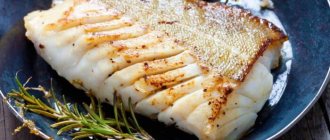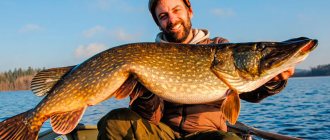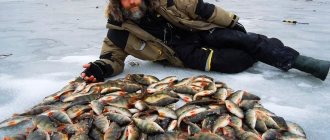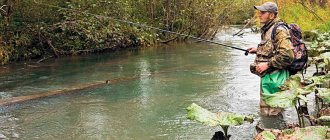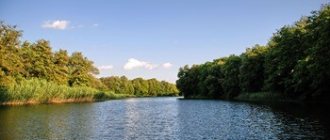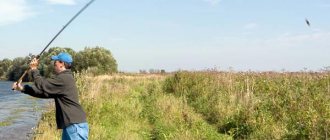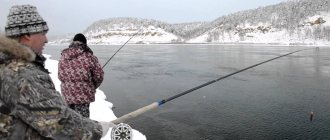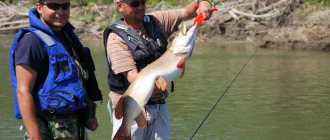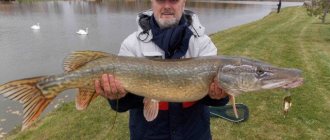The Amur is a large river not only in Russia, which flows through the territorial part of the Far East.
The river contains a wide variety of fish, which is why the river attracts the attention of many anglers. This is especially true for the Lower Amur, where there is more water in the river, which means there are more fish in this area. This article will tell you exactly what types of fish are found in this river, what gear the fish are caught with, and also what the typical fishing season is like here.
Amur River: description

The length of the reservoir is about 2 thousand 824 kilometers and it flows in East Asia, through the territory of the Far East. The river gets its name from the word "amar" or "damur", which means "big river". The Chinese called the Amur River "Heihe", which means "black river", and over time - "Heilongjiang", which means "black dragon river". If you believe the legend, then in the past, when a good black dragon lived in the river, he defeated the evil white dragon, which overturned the boats with fishermen.
After the victory, the black dragon settled forever in the river, within the Khingan cheeks, which are located on the border of the Amur and Jewish Autonomous Regions. In this regard, the Amur River is still called the “black dragon river”.
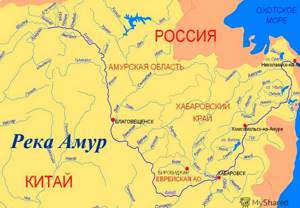
The Mongols call the Amur "Amur Khara-Muren", which means "black wide river". The Amur River flows through the territory of 3 countries, such as:
- Russia, more than 50% of its entire length.
- China, which corresponds to 44.2% of the entire length of the river.
- Mongolia, which accounts for only 1.8%.
The part of the river that is located in Russia is divided into the Siberian and Far Eastern parts. In this regard, the Amur is officially divided into the Upper Amur, which flows within Blagoveshchensk, the Middle Amur, located on the segment from Blagoveshchensk to Khabarovsk, as well as the Lower Amur, which is located below Khabarovsk.
Feeder fishing on the Amur River
What kind of fish is found on the Amur
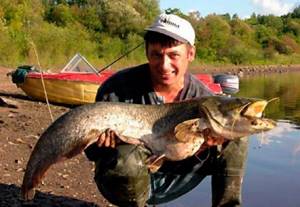
There is simply a huge variety of fish species in the Amur River. which is not observed in other rivers of Russia. More than a hundred different species of fish are found here, 35 of which are of commercial interest.
In this regard, in the Amur River you can catch:
- Far Eastern brook lamprey and Pacific lamprey.
- Kaluga.
- Amur sturgeon and Pacific sturgeon.
- Siberian sterlet.
- Ketu.
- Pink salmon.
- Red sockeye salmon.
- Coho salmon.
- Simu.
- Kamchatka salmon.
- Malmu.
- Kunju.
- Common taimen.
- Lenka.
- Ussuri whitefish.
- Shiga-hadara.
- Amur grayling.
- Asian smelt.
- Noodle fish.
- Amur pike.
- Yazya.
- Far Eastern rudd.
- Black and white carp.
- Lake minnow.
- Golyan Chekanovsky.
- Chersky minnow and Lagovsky minnow.
- Chinese minnow.
- Amur flat-headed asp.
- Chinese Ophiocypris.
- Whiskered chub.
- Amur chebak.
- Minnows of various types.
- Vladislavia.
- Guber horse.
- A mottled horse.
- Amur black belly.
- Fine-scaled yellowfin.
- Black and white Amur bream.
- Mongolian Chanodichthys.
- An ordinary leprechaun.
- Mongolian redfin.
- Gorbushka.
- Bukleyu (Amur brisket).
- Wheat belly.
- Yellowcheek.
- Amur trigub.
- Gorchak.
- Common goldfish.
- Amur-Chinese carp.
- white silver carp.
- Bighead carp.
- Goltsa-usana.
- Eastern loach.
- Far Eastern lefua.
- Amur leptobation.
- Ordinary pinching.
- Soma Soldatova.
- Amur catfish.
- Killer whale.
- Chinese perch.
- Common pike perch.
- Common perch.
- Decorated butterfly.
- Rotana firebrand.
- Eleotris.
- Japanese and Amur goby.
- Southern flathead.
- Amur broadhead.
- Variegated Sculpin.
- Burbot.
- Far Eastern navaga.
- Snakehead.
- Three-spined stickleback.
- Star flounder.
- Striped Arctic flounder.
- Lobana.
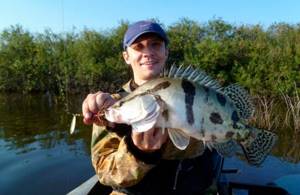
Unfortunately, the Amur River does not have clean water, and the ecological situation wants to be better, which negatively affects many inhabitants of this huge reservoir. The river is polluted by enterprises producing industrial goods, which is due to the lack of proper treatment facilities, as well as frequent complex accidents at industrial enterprises in China.
Quite often, ulcers and various types of wounds can be found on the body of fish caught in the Amur River. As a rule, such caught fish should not be eaten. This is yet another evidence of how man is destroying the richest river. At the same time, he absolutely does not think about the future and lives practically one day at a time.
FISHING ON THE AMUR IN KHABAROVSK REGION
Basic fishing gear
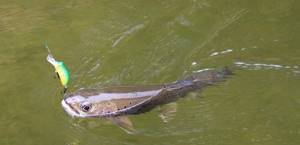
As a rule, gear is selected depending on fishing conditions. In this case, weather conditions play an important role. Therefore, seasonal fishing on this river has some peculiarities. The fact is that there are a lot of migratory fish here that enter the river to spawn. These are mainly salmon, quite valuable fish species, which are considered the main object of fishing.
If fish is caught in the spring, then the following gear is used:
- Float rod.
- Bottom fishing rod.
- Spinning.
In summer and autumn, in addition to the gear indicated in the list, fly fishing gear shows good results in terms of catchability. It should be noted that this is the most difficult gear to use, which requires considerable handling skills from the fisherman.
When fishing in winter, as a rule, winter fishing rods are used, and quite often - of our own production.
Fishing methods
Despite the fact that pike is considered an “ambush” predator, it is caught in various ways, sometimes in “completely unusual places.” In this case, both natural and artificial baits are used. To do this, various methods are used: from the simplest girders, rigs, and slings to special rods with complex equipment for attaching “dead fish” and live bait or “floats”. The most popular methods of catching this fish among most anglers is fishing with artificial baits and spinning rods. Although, for the same purpose, vertical fishing rods or the most ordinary “deaf” fishing rods can be used. Pike can be caught very successfully using fly fishing. Amur pike, along with common pike, is very successfully caught from the ice in winter.
Fishing for pike with a spinning rod
Pike, in its behavior, is a very “plastic” fish. It can survive in any body of water, even when the main food is its own young. It is located at the top of the “food” pyramid in almost all bodies of water and can hunt in any environmental conditions. This is associated with a huge number of baits, including for spinning. The main criteria for choosing a fishing rod in modern spinning fishing is the fishing method: jig, twitching, etc. The length, action and test are selected depending on the fishing location, personal preferences and the baits used. Don’t forget that rods with a “medium” or “medium-fast” action “forgive” much more mistakes than those with a “fast” action. It is advisable to purchase reels and cords according to the chosen fishing rod. In practice, different types of leashes are required to catch fish of any size. Pike teeth cut any fishing line and cord. To protect yourself from losing bait and losing a trophy, there are various methods and types of leashes. Special equipment stands out when using baitcasting reels, sometimes using huge baits such as jerk-baits.
Catching pike with live bait and dead fish
Catching pike with “live bait” and “dead fish” has somewhat “faded” compared to modern equipment for spinning and trolling, but is no less relevant. Fishing with “trolling” began with fishing with tackle with a “dead fish” - “troll”. Dragging "dead fish" was practiced behind a rowboat, but gave way to spinners and other artificial baits. For live bait fishing, various gear is used, some very simple. Traditional “circles”, “transfers”, “postavushki”, and girders are used. Fishing “with live bait” can be carried out both in slow currents and in reservoirs with “stagnant water”. Most of the gear is quite simple, involving a hook (single, double or treble), a metal leash and a sinker. Particularly exciting is fishing with mugs or “postavushki”, when fishing is done from a boat, and the gear is installed in a certain sector of the reservoir or slowly floated down the river.
Features of fishing in different seasons
Winter fishing
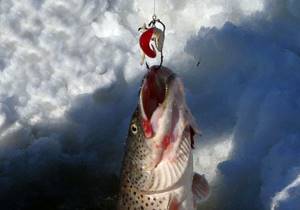
With the arrival of winter, anglers begin a completely different fishing experience. The Amur River is covered with ice mainly in November, and is freed from it around April-May. Here the fish bite regardless of weather conditions, so none of the fishermen will be left without a catch. On a sunny frosty day on a pond you can easily catch:
- Pike.
- Taimen.
- Lenka.
- Whitefish.
- Bream.
For this purpose, artificial baits or live bait are used, as well as classic winter fishing rods. In those places where the river is not covered with ice even in winter, grayling can be caught with a regular Bolognese fishing rod.
As a rule, winter fishing does not involve the use of any special gear or bait. Local fishermen use a regular wooden fishing rod, up to 0.5 meters long, equipped with a reel, fishing line and artificial bait. At the same time, they are made by hand.
The main task comes down to choosing an effective artificial bait. As a rule, local fishermen prefer homemade models.
Fishing on the Amur will not take place if you do not have the skills to use artificial bait.
The action of the bait can be of a different nature, but it boils down to ensuring that the spoon reaches the bottom and hits it, raising a cloud of turbidity, which always attracts fish.
The more experienced the fisherman, the more significant the catch may be, which may include trophy specimens. Whatever the catch, there is always whitefish in it.
Winter fishing on the Amur, cotton on new grabbers, there is fish!
Fishing in spring
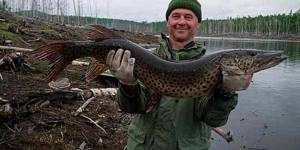
In April-May, when the Amur River is already free of ice, the fishing season for predatory fish opens here. During this period it is really possible to catch:
- Carp.
- Crucian carp.
- Taimen.
- Lenka.
- Whitefish.
Crucian carp bite on ordinary float tackle, greedily grabbing any bait, hungry after winter. As a rule, fish are actively caught in the morning and throughout the daylight hours. In addition to crucian carp, you can catch bream, carp and burbot with a float rod if you try. But the most successful fishing in the spring turns out to be with bottom gear. In this case, bread, pieces of fish or worms are used as bait on the hook.
Catfish, killer whales and other fish are caught with a float rod, especially with pieces of fish or worms.
Armed with a spinning rod, in the spring you can catch taimen or catch lenok if you go to the mountain rivers flowing into the Amur.
In these rivers you can catch:
- Amur pike.
- Verkhoglyad.
- Horse.
- Burbot.
- Whitefish.
As a rule, fish are caught on rotating or oscillating spoons. Recently, baits made from both regular and edible silicone have been considered the most catchy. It should be noted that silicone baits have a wider range of models. Here you can find models that imitate not only fish, but also various animals and insects.
Fishing on the Amur in summer
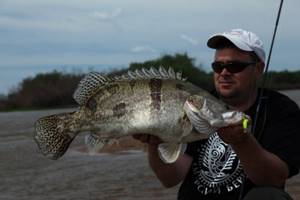
In the summer, when the water warms up to the required temperature, the silver crucian carp that remained in the bays after spawning begins to actively peck on the float rod. It can be caught both with a worm and with pearl barley, and a kilogram carp will be caught on corn. Using bottom gear it is possible to catch catfish, killer whale, and also small pike.
Spinning fishing is most effective in cloudy weather. As autumn approaches, salmon come to the Amur, so fishing in the fall is the most anticipated period for fishermen.
Amur. Early summer
Features of seasonal fishing
A special feature of fishing on the Amur River is its pronounced seasonality. Accordingly, the fisherman will need to choose the right tackle, which will be the key to successful fishing and catching the largest specimens.
Ice tackle
The arrival of winter is an active time for fishermen on the Amur. The river is covered with a thick layer of ice already in November, and ice drift, depending on the temperature in the spring, begins in April-May. Fish on the Amur bite regardless of weather conditions, so every fisherman can, provided he chooses the right gear, not be left without a catch while fishing.
In winter on the Amur you can catch:
- Bream.
- Whitefish.
- Pike.
- Lenka.
- Taimen.
Fishing with classic girders, which use live bait or various artificial fish as bait, is popular. Fishing with a classic winter fishing rod with a jig and other devices is also effective.
Local fishermen use the simplest gear, which is made with their own hands, and with the local abundance of fish, you can catch specimens weighing 10 kilograms or more. Fishing in winter on the Amur is effective, which is why it is so loved by many anglers. Even amateurs from central Russia come here to fish, who can not only catch such trophy specimens that they will later proudly remember, but also see with their own eyes all the beauty of this majestic river.
The most popular type of homemade gear is the Balda rig, which you can easily do with your own hands, and the fisherman has the opportunity to catch large taimen, perch, pike, and other predatory fish. You can also use various artificial baits, spoons and wobblers, with which you can catch trophy specimens weighing more than 15-20 kilograms.
One of the features of winter fishing on the Amur is the constant active bite. The rich species composition of fish allows anglers, regardless of the weather outside, to be guaranteed to return from fishing with a rich catch. While fishing you can catch exotic species of fish that are typical only for the rivers of the Far East. These are Chinese and East Asian catfish, navaga, freshwater flounder, snakehead and other interesting fish.
When going out for winter fishing on the Amur, you should remember about severe temperatures and frosts below minus 30. If local fishermen are already accustomed to such cold weather, then for residents of the European part of Russia, staying in such frost and long fishing in the cold may seem like extreme entertainment. Therefore, you should properly prepare for fishing, including dressing warmly and stocking up on hot tea.
Spring fishing
In the spring in April-May, the Amur is freed from ice, and fishermen begin an active time of catching various predatory and peaceful fish. The simplest tackle actively takes:
- Taimen.
- Pike.
- Zander.
- Salmon fish.
- Carp.
- Bream.
Excellent results are shown by trolling with all kinds of wobblers and artificial baits. Large pike and taimen can be caught well on girders and half-bottoms using live bait and pieces of dead fish.
In May, active fishing for carp and other carp fish begins. Local fishermen use boilies, half-bottoms and feeders. In bays and backwaters you can successfully fish with a simple float rod. It is only necessary to use the strongest possible tackle, as there is a possibility of catching large specimens weighing 20 kilograms or more.
Experienced fishermen successfully catch large catfish weighing 20-30 kilograms. They use durable bottom tackle, and use large live bait, frogs and toads, mice and rats as bait.
In the upper reaches of the Amur and in mountain streams you can catch lenok and taimen. This is a large predatory fish that belongs to the salmon family. Taimen is one of the most coveted trophies for every angler. This fish grows to a weight of 50 kilograms and is distinguished by its strength and tenacity when playing. Often, such a fight with a 20-30 kilogram taimen can last for several hours, and only after the fish is fairly tired, it will be possible to bring it to a boat or pull it ashore.
Summer fishing on the Amur
The climate in the Far East is changeable, so in summer extreme heat can be replaced by prolonged cold spells and rainy weather. Most fishermen on the Amur in summer use a float rod, which catches goldfish well. This fish is successfully caught using corn, barley and worm. In parallel with the crucian carp, a small-sized crucian carp bites on the float rod.
Large catfish are excellently caught with a bottom fishing rod, and with the approach of autumn, when salmon come into the river to spawn, active fishing for this fish begins, which is done both with spoons and with homemade devices with rigidly fixed hooks.
Spinning fishing is effective in cloudy weather, when large taimen begin to emerge from cover and large pike are excellently caught. Fishermen practice trolling on boats in numerous bays, as well as classic spinning using spinners and using various types of wobblers, which are designed for catching large fish.
Occasionally in summer, sterlet and large sturgeon may be caught on bottom tackle when using baits of animal and plant origin. The river is home to truly gigantic specimens of sturgeon, whose weight can reach 100 kilograms. Unfortunately, due to the use of not very strong tackle, it can be difficult to fish out such a river giant. Sturgeon are often found in the upper reaches of the river, directly on the border with China. Catching this fish requires using strong tackle. Many anglers use nets and other equipment to catch this large, valuable game fish.
